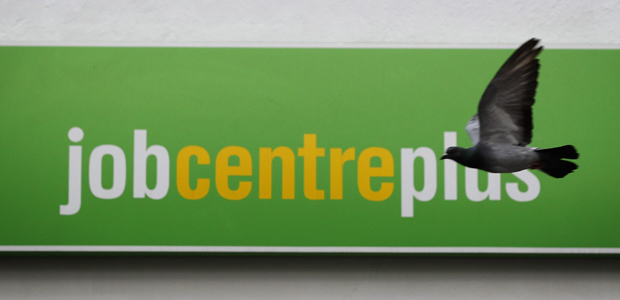UK jobless figures down – why?
As the UK struggles under the government’s coalition cuts, the latest unemployment figures show a surprise fall in jobless numbers – but why?

The number of people officially unemployed fell by 51,000 to 2.61 million between February and April.
The government claims it shows there is growth in the economy, but many people attribute the fall to the fact more people are becoming self-employed.
Self-employment has reached a record figure of 4.17 million, up by 84,000 since the previous quarter.
There are also a high number of people working part-time in Britain, because they could not find full-time jobs.
This statistic rose by 25,000 in the three months to April, to reach 1.41million.
Read more on how the latest unemployment figures show three months of falls
Benefit claims up
However, the number of people claiming benefits last month rose 8,100 compared to April, to a total of 1.6m.
The number of part-time workers rose by 83,000 over the period to reach 7.97m.
Experts warn that “underemployment” is still rife in the UK, with tens of thousands of people trapped in jobs that are not full-time hours.
Other figures from the Office for National Statistics showed that the number of people unemployed for more than a year increased by 30,000 to 886,000. The number of people unemployed for more than two years rose by 29,000 to 434,000.
London biggest faller
Regionally, unemployment fell the most in London, by 20,000, with the biggest rises seen in the north east and north west, each rising by 8,000 people.
Andrew Sissons, researcher at the Work Foundation, said: “These are the sort of figures we’d expect to see during a strong economic recovery.
“But it is difficult to reconcile these numbers with the ongoing problems in the economy.
“There are three possible explanations for this baffling trend. First, the good news on jobs may be a temporary blip, and we may see unemployment rise sharply later in the year.
“Second, the GDP figures may be underestimating the performance of the economy, and may eventually be revised upwards.
“Third, and perhaps most worrying, it is possible that we are seeing a transition to a lower wage economy, in which jobs bounce back, but at a lower level of pay and productivity. “
Brendan Barber, TUC general secretary said: “The figures show some long overdue good news in the labour market. New full-time jobs have been created and employment is up while unemployment has fallen.
“However, there are still real concerns about this being a sustainable recovery. Long-term youth unemployment has risen yet again, the claimant count is still going up and while male unemployment fell by 52,000 in the quarter, the number of unemployed women only fell by 3,000.”
